It happened at 4 a.m. on a freezing morning.
I was alone on the road, halfway through a long haul, when my brakes gave out. I had felt the pedal get softer the day before, but figured I could deal with it later. That choice almost cost me the load—and maybe worse.
I’ve been around trucks for a long time. Driving, maintaining, inspecting—you name it. I’ve learned the hard way that many truck problems start small. They show signs. But those signs are easy to miss, especially when you’re busy chasing deadlines.
If you’re here, you’re probably worried about something on your truck. Or maybe you just want to stay ahead of breakdowns and keep your business moving.
This article will walk you through 9 truck problems you should never ignore. These aren’t rare. They’re common—and they get worse when you wait.
By the end, you’ll know how to spot these issues early and what steps to take so your truck stays on the road.
Let’s jump in!
Quick Chart
Let’s start with a bird’s-eye view. The table below offers a quick glance at each common problem before we explore them one by one.
| Problem | Key Signs | Common Causes | How to Avoid |
| Engine Overheating | Temp rising, steam, burning smell, strange noises | Low coolant, bad thermostat, clogged radiator, leaks | Check coolant, let engine cool, carry spare water/coolant |
| Brake System Failure | Spongy pedal, grinding, pulling, brake light, burning smell | Worn pads, fluid leaks, overheated brakes, ABS failure | Inspect pads, check fluid, use engine braking, regular brake checks |
| Transmission Slipping | High revs, delayed shifts, jerky movement, burning smell, warning light | Low/dirty fluid, overheating, worn gears, bad sensors | Change fluid, don’t overload, listen for gear changes |
| Battery Failure | Slow crank, dim lights, clicking, glitchy electronics, battery light | Old battery, corrosion, loose cables, power drain | Test battery, clean terminals, unplug devices, replace early |
| Suspension Problems | Uneven ride, clunking, swaying, rough ride, tire patch wear | Broken springs, worn shocks, overload, rust | Walkarounds, stick to load limits, listen for noise, inspections |
| Tire Wear & Blowouts | Worn tread, cracks, bulges, vibration, pressure loss | Under/overinflation, overloading, old tires, poor alignment | Pre-trip checks, rotate tires, check PSI, replace worn tires |
| Fuel Efficiency Drops | More fill-ups, weak power, exhaust smell, check engine light, rough idle | Dirty filters, dragging brakes, load strain, bad injectors | Maintain schedule, lighten load, smooth driving, check tire pressure |
| Steering Difficulties | Hard turning, pulling, vibration, squealing, loose wheel feel | Low fluid, bad alignment, worn tie rods, broken belts | Check fluid, inspect front end, align wheels, rotate tires |
| Exhaust System Damage | Exhaust smell in cab, loud engine, rusted pipes, poor fuel economy, CEL | Cracked pipes, rust, bad hangers, worn sensors, bad gaskets | Inspect undercarriage, fix early leaks, rust protection, listen |
Ready to dig deeper? Let’s move on to the full breakdowns, starting with engine overheating.
1. Engine Overheating
Engine overheating is one of the most common problems truckers face, especially during long drives or hot weather. It means the engine is running hotter than it should, and if you keep driving, the damage can be serious—like a cracked head or blown gasket.
It usually starts with small signs, but many drivers miss them until it’s too late.
Signs
- Temperature Gauge Rising Fast: If your gauge starts climbing past normal, your engine is getting hotter than it should.
- Steam from Under the Hood: White steam usually means coolant is boiling. That’s a sign your engine is overheating.
- Burning Smell: A sweet or burnt rubber smell could mean coolant or engine oil is leaking onto hot surfaces.
- Strange Noises: Ticking, knocking, or pinging sounds can happen when the engine overheats and metal parts expand too much.
Common Causes
- Low Coolant Levels: Coolant keeps your engine from overheating. If it’s low, heat can build up fast.
- Faulty Thermostat: If the thermostat gets stuck closed, coolant won’t flow, and the engine can overheat quickly.
- Broken Water Pump: This part keeps coolant moving through the engine. If it fails, nothing stays cool.
- Clogged Radiator: Dirt, bugs, or rust can block airflow or coolant flow. That makes it hard for heat to escape.
- Coolant Leaks: Cracked hoses or a loose radiator cap can slowly leak coolant, leading to overheating over time.
How To Avoid
- Pull Over Safely: If your engine starts to overheat, get off the road as soon as you can.
- Don’t Open the Radiator Cap Hot: Pressure builds up in the radiator. Opening it too soon can cause burns.
- Let the Engine Cool Down: Wait at least 15–30 minutes before checking anything under the hood.
- Check Coolant Levels: Once the engine is cool, see if the coolant is low. Add more if needed.
- Carry Extra Coolant or Water: I always keep a spare jug in my rig. It’s come in handy more than once.
Have you ever seen steam under your hood and didn’t know what to do?
Overheating can seem like a small issue at first—but it’s a warning you don’t want to ignore. A quick stop today can save you thousands in repairs later.
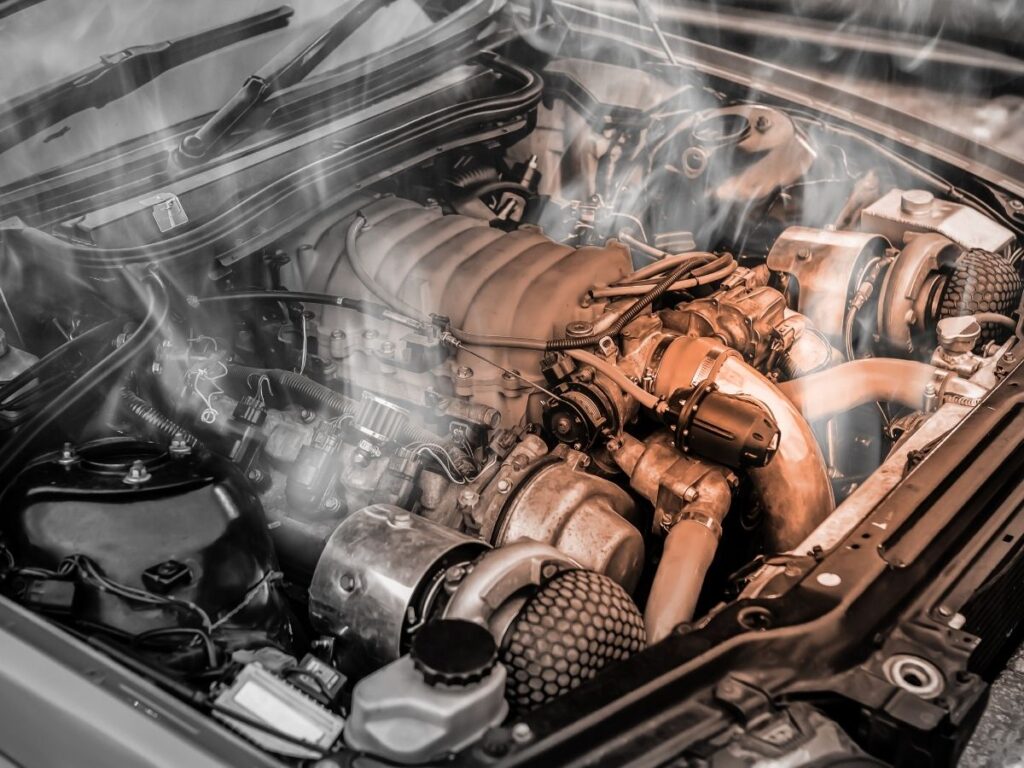
2. Brake System Failure
One of the scariest moments I’ve had on the road was when my brakes gave out. It was early morning. I was rolling down a slight hill, tried to slow down—and the pedal sank to the floor. No response.
Luckily, I had enough space to coast to a stop. But that moment sticks with me. It reminded me how fast things can go wrong when your brakes stop working.
Your truck’s brakes are your last line of defense. If they fail, you lose control.
Signs
- Spongy Brake Pedal: If the pedal feels soft or sinks too far, you might have air in the brake lines or a fluid leak.
- Grinding or Squealing Sounds: This usually means your brake pads are worn out and rubbing metal-on-metal.
- Truck Pulling to One Side: Uneven braking could be a sign of a stuck caliper or uneven wear.
- Brake Warning Light: This light comes on when the system detects low fluid or other issues. Don’t ignore it.
- Burning Smell After Braking: A sharp odor after braking could mean overheated brake pads or fluid.
Common Causes
- Worn Brake Pads: Pads wear out over time. If you wait too long, they can damage the rotors.
- Brake Fluid Leaks: Leaks lower the pressure needed to activate your brakes. Even small leaks are dangerous.
- Overheated Brakes: This happens from riding the brakes too long, especially downhill. It reduces braking power.
- ABS Failure: If the anti-lock braking system fails, you may lose control in wet or slippery conditions.
- Faulty Brake Lines or Calipers: These parts are key to applying force to the brakes. If they fail, so does your stopping power.
How To Avoid
- Inspect Brake Pads Regularly: Listen for grinding or squealing. That’s your early warning.
- Check Fluid Levels: Low brake fluid can lead to soft brakes. Top it off when needed.
- Avoid Riding the Brakes: Use engine braking when going downhill to give your brakes a break.
- Get Regular Brake Checks: A mechanic can catch worn parts before they cause real trouble.
- Pay Attention to How Your Truck Feels: Brakes don’t just fail—they tell you they’re in trouble first.
The brakes should always feel solid and safe. If something feels off, don’t brush it aside. I’ve been there—and trust me, catching it early is way better than feeling helpless when you can’t stop.
If you’re in the market for a trailer, starting with quality matters. Rhinotrail trailers are built with heavy-duty, air brake systems designed for durability, responsiveness, and performance even under full load or on tough terrain.
3. Transmission Slipping
I’ll never forget the day I tried to merge onto a busy highway and the truck just wouldn’t move right. The engine roared, but the wheels barely responded. For a second, I thought the transmission had quit completely. It didn’t—but that was the warning sign I needed.
Transmission slipping means the truck isn’t staying in gear or is changing gears without control. Power feels weak, the ride feels off, and it can make simple tasks feel dangerous.
Signs
- Engine Revs but Truck Doesn’t Accelerate: The motor works harder, but speed stays the same.
- Jerky or Delayed Gear Shifts: Gear changes don’t feel smooth—they jump or hesitate.
- Burning Smell from Underneath: Often a sign the transmission is overheating or the fluid is breaking down.
- Grinding or Whining Sounds: Noises during shifting often point to wear inside the transmission.
- Warning Lights on the Dash: Modern trucks usually signal trouble through the check engine or transmission light.
Common Causes
- Low or Old Transmission Fluid: Transmission fluid keeps everything running smooth. If it’s low or dirty, problems start fast.
- Overheating: Constant heat wears parts down and damages seals.
- Worn Gears or Bands: These internal parts are essential for shifting. Once they’re worn, slipping starts.
- Faulty Sensors or Control Modules: Electronics that send bad signals can cause the transmission to act up.
- Clutch Wear (in manuals): A worn clutch won’t grip well and causes slipping between gears.
How To Avoid
- Check Fluid Levels Often: Healthy transmission fluid is key—clean, red, and full.
- Service the Transmission on Schedule: Routine maintenance prevents surprises.
- Don’t Haul More Than Rated Capacity: Overloading builds heat and wears out internal parts.
- Warm the Truck Before Driving in Cold Weather: Cold fluid doesn’t flow well. Letting the system warm up can help protect it.
- Listen and Feel for Changes: A small shift in how the truck feels might be the first clue.
Transmission trouble can sneak up. One day it’s a small delay, the next, a tow truck call.
Slipping gears should never be brushed off. I’ve made that mistake—and it turned into a full rebuild. Catching it early can keep the truck on the road and the wallet intact.
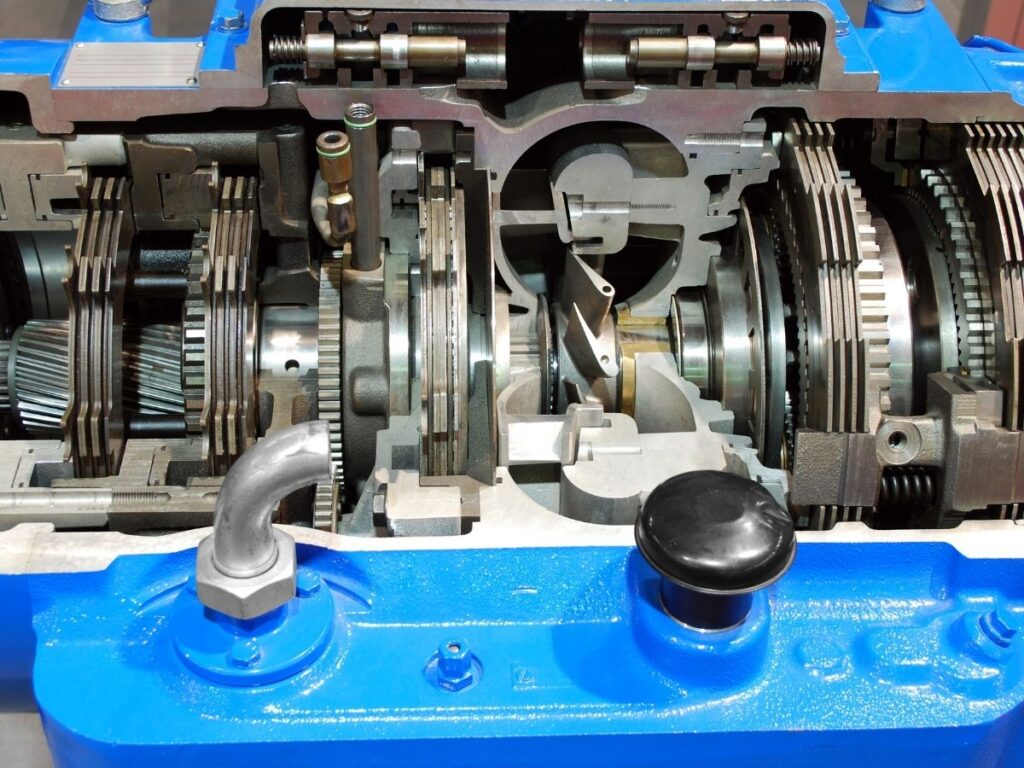
4. Battery Failure
A dead battery doesn’t just slow things down—it stops everything. No lights. No engine. No radio. Just silence and frustration. It often hits at the worst time too, like early in the morning or after a long rest break.
Truck batteries can fail with little warning. And once they do, there’s no starting the engine without help. That’s why it’s important to know the signs and take action early.
Signs
- Slow Engine Crank: The engine takes longer to turn over than usual, especially in cold weather.
- Dim or Flickering Lights: Weak headlights or interior lights can mean low battery power.
- Clicking Sound When Starting: This often points to not enough charge to start the engine.
- Electronics Glitching or Resetting: Screens, radios, or power windows acting strange may signal battery trouble.
- Battery Light On the Dash: This warning usually comes on when battery voltage drops too low.
Common Causes
- Old Battery: Most batteries last 3–5 years before performance drops.
- Corroded Terminals: Rust or buildup on the battery posts blocks power flow.
- Loose Cables: A bad connection keeps the battery from delivering full power.
- Extreme Heat or Cold: Harsh weather breaks batteries down faster than usual.
- Power Drain While Parked: Devices or lights left on can slowly drain the charge overnight.
How To Avoid
- Test the Battery Regularly: Quick checks help catch weak batteries before they die.
- Keep Terminals Clean: A wire brush or cleaner keeps the power flowing.
- Tighten Connections: Secure cables prevent power dropouts.
- Shut Off Accessories Before Parking: Even small lights can drain power if left on.
- Replace on Schedule: If the battery is nearing 5 years, it’s safer to swap it out than risk a breakdown.
Few things feel worse than turning the key and hearing nothing.
Battery failure might seem like a small issue, but it brings everything to a stop. I’ve sat in the cab on a cold morning, turning the key again and again, hoping for a sound—any sound. All I could think about was the load I was missing and how a five-minute battery check the day before could’ve saved the entire day.
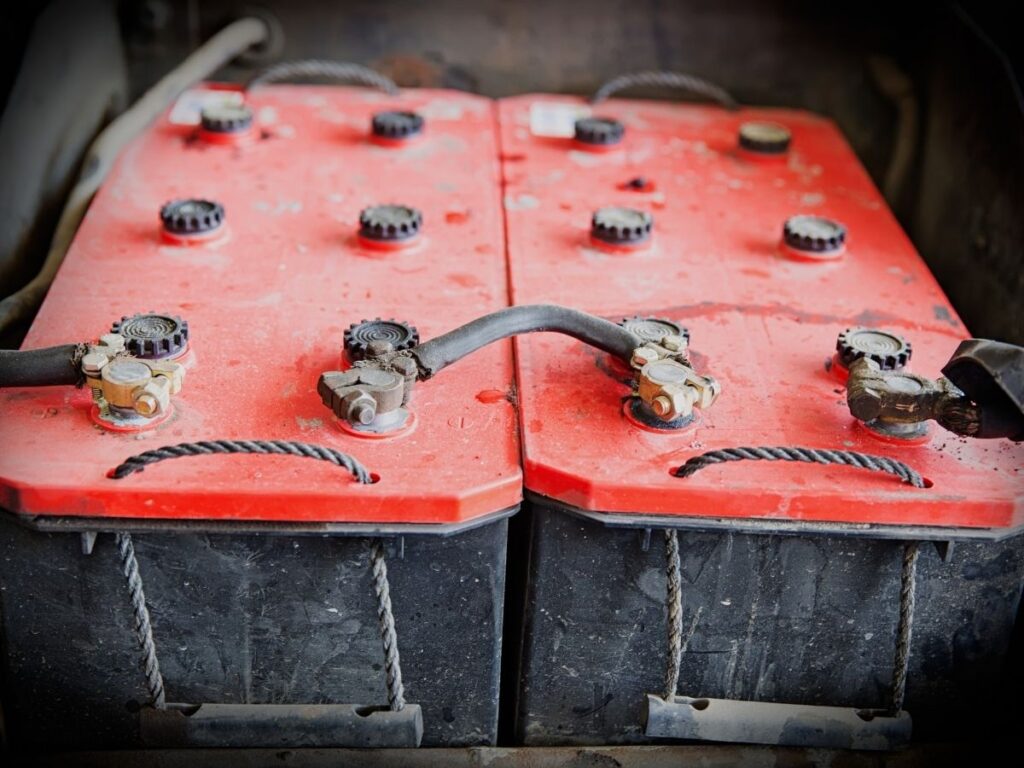
5. Suspension Problems
Driving a fully loaded trailer down a rough road feels tough enough—but when the suspension’s off, every bump hits harder. One time, I noticed the truck was leaning to one side after a delivery. At first, I thought it was the load shifting. Turns out, a worn-out leaf spring had snapped.
The suspension system does more than just smooth out the ride. It helps with handling, keeps the tires in contact with the road, and supports the truck’s weight. If it starts to fail, the ride gets rough—and dangerous.
Signs
- Uneven Ride Height: If one side of the truck sits lower, it could mean a broken spring or damaged air suspension.
- Rougher Ride Than Usual: Feeling every bump or dip in the road is a clue something’s wrong underneath.
- Leaning in Turns: Trucks that sway too much or lean during turns might have worn shocks or bushings.
- Knocking or Clunking Sounds: These noises can come from loose or broken suspension parts.
- Tire Wear in Patches: If tires wear unevenly, the suspension might not be holding the truck level.
Common Causes
- Worn Shocks or Struts: These parts absorb bumps. When they fail, control gets worse.
- Broken Springs or Air Bags: Springs carry the truck’s weight. Once damaged, balance and ride quality drop.
- Loose or Damaged Bushings: Bushings help joints and arms move smoothly. Worn bushings can lead to poor handling.
- Overloading: Carrying more than the rated weight puts too much stress on suspension components.
- Rust and Corrosion: Metal parts wear out faster in wet or salty conditions, especially up north.
How To Avoid
- Do Regular Walkarounds: Look under the truck for any signs of sagging, leaking shocks, or broken parts.
- Listen for New Noises: Clunks or rattles under the frame are often the first signs of trouble.
- Stick to Weight Limits: Overloading puts serious strain on the suspension and shortens its life.
- Schedule Suspension Inspections: Having a pro check the system can catch problems early.
- Rotate Tires and Watch Tread Wear: Uneven wear often points to suspension or alignment issues.
Ever feel like your truck is bouncing more than usual or drifting in a turn?
Suspension problems don’t just make the ride rough—they put pressure on everything else too. I’ve learned it’s better to deal with the small stuff under the truck before it turns into big stuff that leaves it parked.
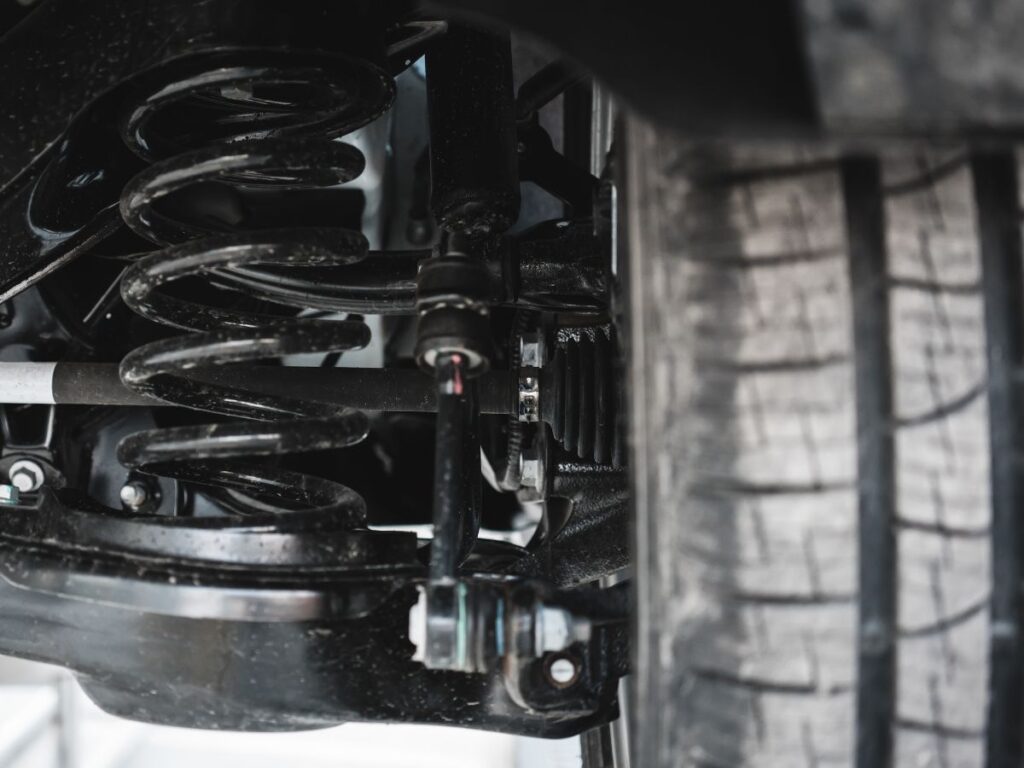
6. Tire Wear and Blowouts
A blowout is one of those things that hits fast. Loud pop. Sudden pull. I had one on a two-lane road with no shoulder. It tore part of the mudflap and nearly pulled me into the ditch. I was lucky. Others haven’t been.
Tires don’t always fail without warning. They often give signs first. If those signs are missed, the damage can be serious—not just to the truck, but to the load, and worse, to people.
Signs
- Worn Tread: Tires with low tread depth lose grip, especially in rain or snow.
- Cracks or Bulges: These are signs of weakened sidewalls, which can blow out under pressure.
- Uneven Wear Patterns: One side wearing faster could mean bad alignment or suspension issues.
- Vibration While Driving: A shaky ride might be caused by a tire that’s out of balance or separating inside.
- Frequent Air Pressure Loss: If a tire keeps losing air, it may have a slow leak or damaged valve.
Common Causes
- Underinflated or Overinflated Tires: Both can cause heat buildup and faster wear.
- Overloading: Too much weight puts stress on tires, especially the rears.
- Poor Alignment: Misalignment causes uneven wear, shortening tire life.
- Old or Expired Tires: Even unused tires break down over time. Rubber ages and loses strength.
- Road Hazards: Nails, sharp debris, or potholes can damage the inner layers of a tire.
How To Avoid
- Do Pre-Trip Tire Checks: Look for visible wear, damage, or pressure issues every day.
- Use a Tire Pressure Gauge: Don’t guess—check PSI regularly to stay within the safe range.
- Rotate Tires as Needed: Rotation helps even out wear and extends tire life.
- Watch for Load Balance: Shifting weight evenly across axles prevents overload on a single tire.
- Replace Tires Before They Fail: If tread is too low or the sidewall shows damage, it’s time.
Tires are easy to overlook during busy days, but all it takes is one failure to shut everything down. A quick daily check can be the difference between a smooth haul and hours waiting for a roadside repair.
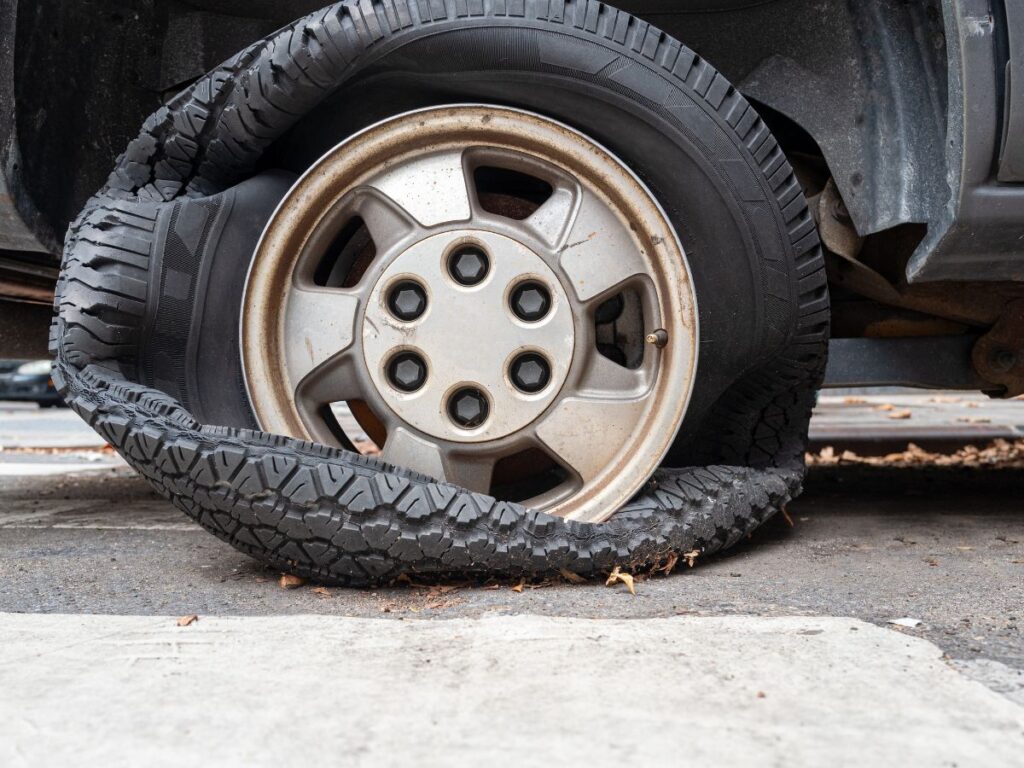
7. Fuel Efficiency Drops
Noticing more fuel stops than usual? That’s often the first sign something’s off. Fewer miles per gallon can mean money slipping away without even realizing it. Over time, poor fuel efficiency adds up fast—and eats into profits.
Fuel problems don’t always start with the engine. Sometimes it’s small things that build up. Dirty filters. Poor tire pressure. Even how the truck is loaded or driven. The good news? Most of these issues can be spotted and fixed early.
Signs
- More Frequent Fill-Ups: Needing to fuel up more often without changing your route.
- Reduced Power or Acceleration: The truck may feel sluggish, especially when climbing or passing.
- Strong Exhaust Smell or Dark Smoke: Unburned fuel may be exiting through the exhaust, wasting fuel.
- Check Engine Light: Can signal issues with sensors or fuel systems.
- Uneven Idling or Engine Hesitation: A rough idle often means the engine isn’t burning fuel efficiently.
Common Causes
- Clogged Air Filters: A dirty filter limits airflow, making the engine work harder and burn more fuel.
- Incorrect Tire Pressure: Low or uneven pressure increases rolling resistance and burns more fuel.
- Bad Fuel Injectors: Worn or dirty injectors can send the wrong amount of fuel into the engine.
- Dragging Brakes: Even a slightly stuck brake can create drag and lower mileage.
- Excess Weight or Poor Load Balance: Overloading or stacking weight poorly causes strain and higher fuel use.
- Aggressive Driving Habits: Hard acceleration, speeding, and sudden stops waste more fuel than most think.
How To Avoid
- Stick to a Maintenance Schedule: Clean filters, tune-ups, and fluid checks keep the engine running smooth.
- Monitor Tire Pressure Weekly: Keeping PSI within spec saves fuel and helps tires last longer.
- Lighten the Load When Possible: Every extra pound matters over long distances.
- Use Cruise Control When Safe: Steady speed helps reduce unnecessary fuel burn.
- Drive Smoothly: Gradual acceleration and braking can make a noticeable difference over time.
Ever looked back at a fuel receipt and wondered how it added up so fast?
Fuel costs are one of the biggest daily expenses in trucking. Paying attention to small signs can help keep that cost under control—mile after mile.
8. Steering Difficulties
A stiff wheel or sudden pull can make even a short trip feel risky. One time, the steering felt heavier than usual—subtle, but noticeable. I brushed it off. By the end of the day, I was fighting the wheel just to stay in my lane. Turned out, the power steering fluid was nearly gone.
Steering issues can creep up slowly. At first, it might feel like the road is just a little rougher. But over time, the wheel gets harder to turn, or worse—it starts pulling hard in one direction. That’s not just uncomfortable. It’s unsafe.
Signs
- Hard to Turn the Wheel: Steering feels stiff, especially when turning at low speeds.
- Wheel Pulls to One Side: Could mean alignment problems, worn tires, or uneven pressure.
- Shaking or Vibrating While Driving: Often felt in the steering wheel—usually points to unbalanced wheels or loose parts.
- Squealing or Whining When Turning: A high-pitched noise can mean low power steering fluid or a bad pump.
- Steering Wheel Feels Loose or Wanders: Can be a sign of worn tie rods, ball joints, or a damaged steering rack.
Common Causes
- Low or Leaking Power Steering Fluid: Fluid helps make turning easier. Without it, steering gets stiff fast.
- Worn Steering Components: Tie rods, ball joints, and bushings wear down over time.
- Wheel Alignment Issues: Misalignment causes uneven pressure and makes steering pull to one side.
- Bad Wheel Bearings: These can cause vibration and affect how the steering responds.
- Broken or Loose Belts: Power steering pumps rely on drive belts—if one breaks, steering becomes difficult quickly.
How To Avoid
- Check Power Steering Fluid Monthly: Keep it at the right level and look for leaks under the truck.
- Get Alignment Checked Routinely: Helps reduce tire wear and keeps steering stable.
- Inspect Front-End Parts During Maintenance: Catching a worn tie rod or joint early can prevent steering failure.
- Listen and Feel While Driving: New noises or pulling are often the first warning signs.
- Rotate Tires and Keep Pressure Balanced: Helps avoid uneven wear that can affect steering.
Steering problems don’t just wear you out—they wear out your parts too. Catching the signs early makes a smoother, safer ride for every mile ahead.

9. Exhaust System Damage
A few months back, I started smelling something strange in the cab—kind of like gas or burnt metal. At first, I thought it was coming from outside. But the smell got worse, and the engine sounded louder than usual. Turned out, there was a crack in the exhaust pipe just under the cab.
The exhaust system does more than quiet down the engine. It pushes fumes away, helps control emissions, and keeps the engine running efficiently. If it’s damaged, the truck can lose power, burn more fuel, and even expose the driver to harmful gases.
Signs
- Strong Exhaust Smell in the Cab: Could mean a leak in the exhaust pipe or muffler—this can be dangerous.
- Louder Engine Noise: A damaged muffler or cracked pipe makes the engine sound rough or too loud.
- Reduced Fuel Efficiency: If exhaust gases don’t flow properly, the engine works harder.
- Visible Rust or Holes: Corrosion on pipes or mufflers often leads to leaks.
- Check Engine Light: May come on if oxygen sensors or emission controls are affected.
Common Causes
- Rust and Corrosion: Salt, moisture, and time all eat away at metal parts, especially under the truck.
- Loose or Broken Hangers: These hold the system in place. If they fail, pipes can sag or break.
- Cracked Pipes or Mufflers: Damage from rough roads or impact can cause leaks or breaks.
- Worn-Out Gaskets: These seals can break down and let fumes escape.
- Sensor Failure: Oxygen or emissions sensors can fail, triggering warning lights and reducing engine performance.
How To Avoid
- Inspect the Undercarriage Regularly: Look for rust, hanging parts, or cracks.
- Listen for New Noises: A louder engine or rattle underneath might mean trouble.
- Don’t Ignore Smells: A strong exhaust odor inside the cab needs attention right away.
- Use Rust Protection in Harsh Climates: Helps slow down corrosion from road salt and moisture.
- Fix Small Issues Early: A loose hanger today can turn into a broken pipe tomorrow.
Exhaust system problems are easy to miss at first, but they grow fast. Fixing small damage early can keep fumes out of the cab and the truck running clean and strong.
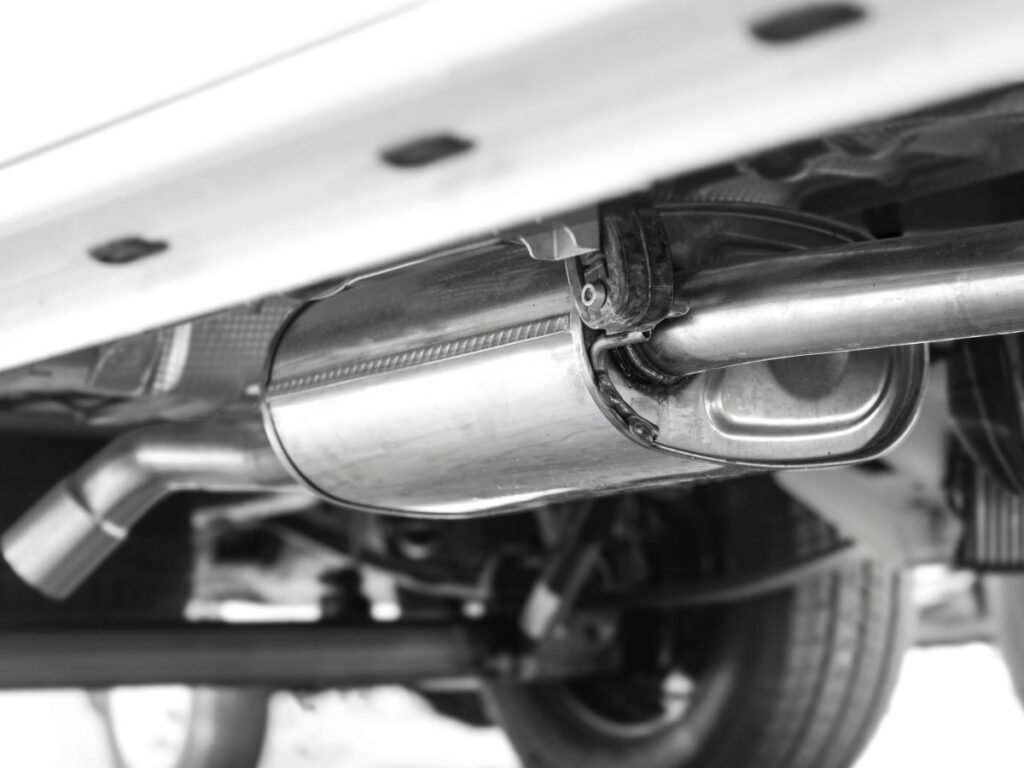
Conclusion
I’ve sat in silence, turning the key, waiting on help that never came fast enough. I’ve also seen what happens when trucks push past the warning signs.
From battery failure to exhaust leaks, this guide showed you 9 problems that take trucks off the road.
Strong trailers reduce stress on your truck’s systems. They support better balance, smoother braking, and lower fuel use.
That’s what Rhinotrail delivers—semi-trailers that don’t just haul, but protect everything on the move.
Contact us today for trailers that work as hard as you do!


